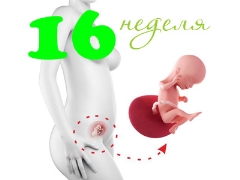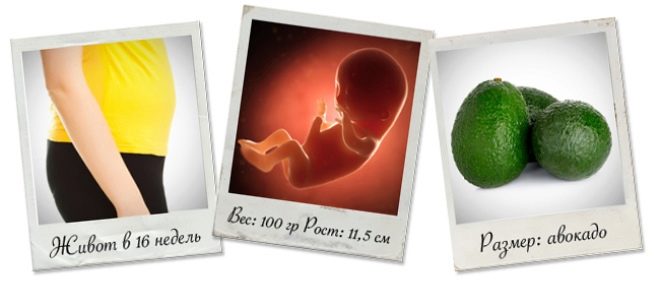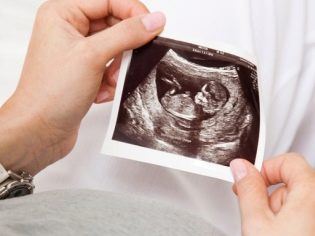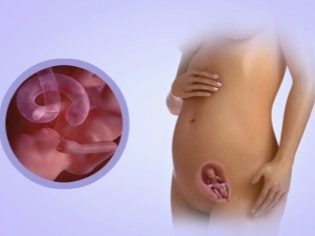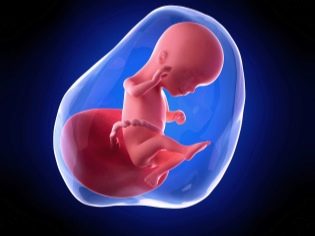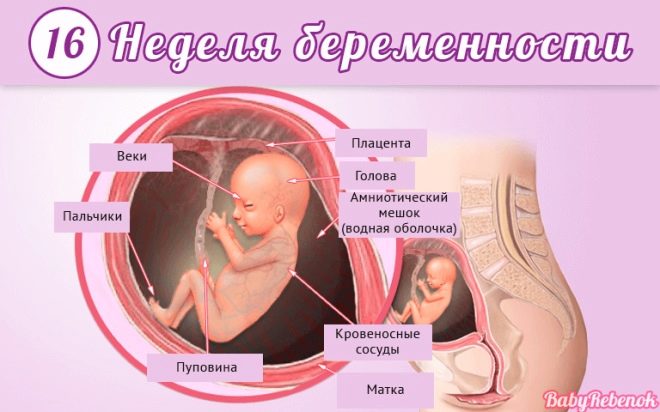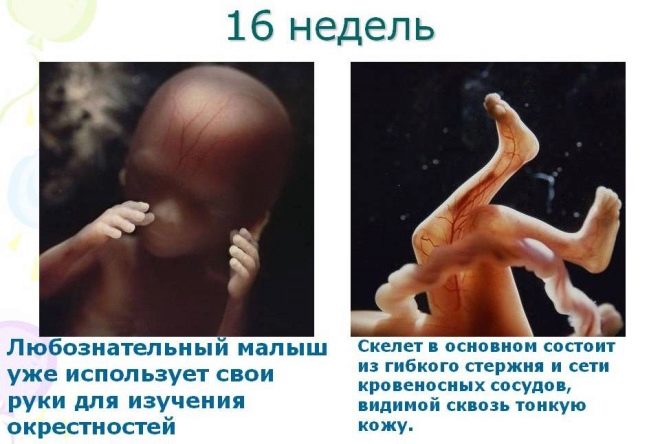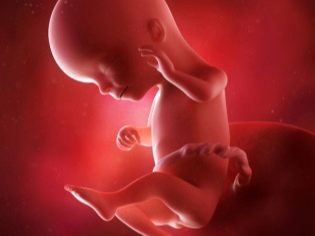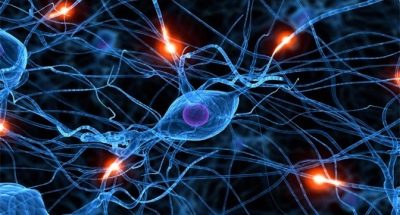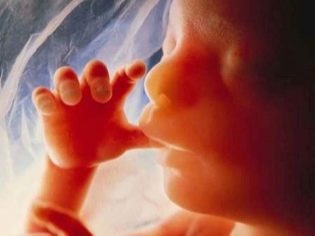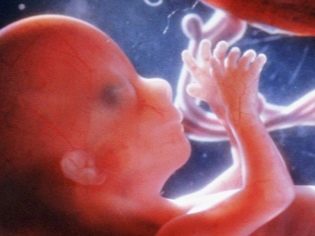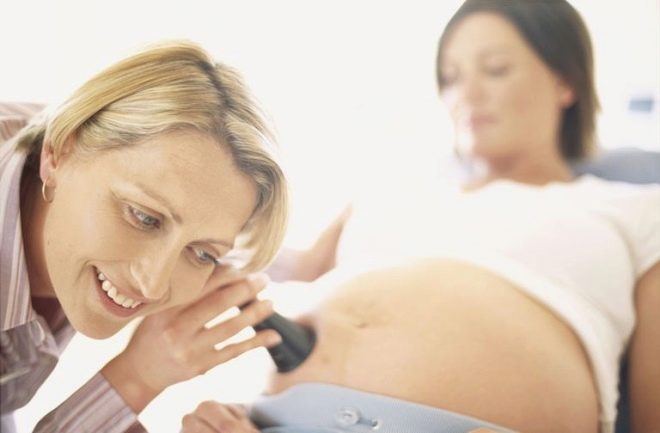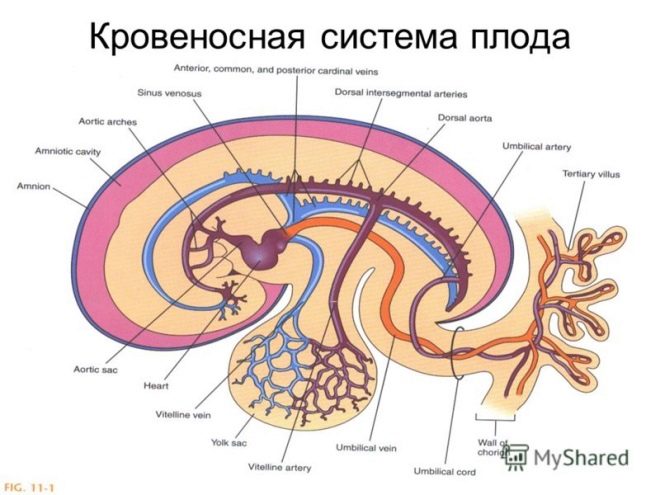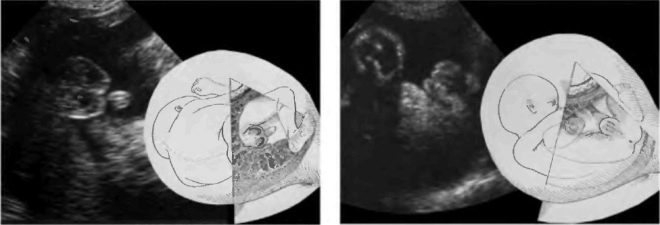Fetal development in the 16th week of pregnancy
The first half of pregnancy is very important for the development of the fetus. At this time, important biological transformations occur in the body of a woman, associated with the further growth of the child.
Anatomical features
16 week of pregnancy belongs to the second trimester. At this stage, the physiological connection between mother and child begins to increase. In the body of the baby has already undergone significant changes. During the first months of pregnancy, the child has grown significantly, many internal organs have been formed by this period, but important systems of the child’s body continue to improve.
To this period of pregnancy, doctors already call the baby a fetus, although earlier they used another term - the embryo. The size of the fetus for this period of pregnancy is, as a rule, 12-16 cm. The weight of the baby is approximately 100-150 grams.
Doctors note that by this time of pregnancy the size of the child is comparable to the average avocado.
To accurately determine the parameters of the body of the baby, specialists use ultrasound techniques. They accurately and safely allow you to evaluate the main clinical features of fetal intrauterine growth. For medical reasons, an ultrasound scan is scheduled. During such a study, the specialist determines several important parameters at once, among them - coccyx parietal size (KTR). This indicator describes the length from the tailbone to the crown of the baby.
For each period of pregnancy, this indicator has certain norms, therefore it allows to assess the compliance of the size of the fetus with the gestation period. So, at week 16, its normal values are approximately 65-90 mm.
It is important to remember that KTR indicators are averaged. According to the results of an ultrasound, doctors never make any diagnoses. If, after an ultrasound, the values of fetal CTE are somewhat different from normal, the expectant mother should consult with her obstetrician-gynecologist.
In obstetric practice, there are many cases when such a sign was just an individual feature and did not at all indicate the presence of some kind of pathology of intrauterine development in a baby.
In addition to CTE, ultrasound scanners can determine other clinical criteria for fetal development of the fetus - in particular, they measure distance between the parietal bones. Normal at this stage of pregnancy, it is approximately 39 mm. The average circumference of the baby’s tummy is 108 mm, and the length of the femur is 27 mm.
During the ultrasound examination, the doctor can also easily determine the location of the fetus in the uterus. In case of multiple pregnancies, a specialist evaluates how each baby is placed. Through ultrasound, you can also diagnose a low location of the fetus, as well as comorbidities.
Development features
At 15-16 weeks with the baby there are strong changes.At this stage of pregnancy, the child is already quite well manifested physical activity. Many expectant mothers are starting to feel “bumps” in their stomachs.
The severity of such manifestations is different. This largely depends on the initial size of the baby, as well as on the amount of amniotic fluid. If the amniotic fluid is abundant, and the baby is small, the expectant mother may experience only minor fluctuations. So, she can feel the “fluttering of butterflies” in her stomach or the “bursting of bubbles”.
If at this stage of pregnancy the expectant mother does not experience any strange sensations, you should not immediately panic. Many women note that for the first time they felt the active movements of their babies only by the 20-22 week of pregnancy.
The motor activity of the child at this stage is an individual feature of each individual fetus. Feelings during the first and subsequent pregnancies in women are never identical. The activity of the child is affected by a huge variety of different factors.
By this period, the placenta is fully formed. This organ is very important, because there are blood vessels in it, through which all the important nutrients are delivered to the children's body, as well as dissolved oxygen. At the 16th week of pregnancy, the placenta and the baby are already closely linked.
Skeleton and body shape
By the second trimester of pregnancy, a child who is in the womb had many elements of the musculoskeletal system. The baby already has the beginnings of all milk teeth.
Every day, the child increases the density of cartilage and bone tissue - this is necessary in order to further the children's body could cope with the increasing static and dynamic load. Characteristic changes occur in the cervical spine. The child is already able to hold the neck straight, and also to make head turns to the sides.
The child also changes the configuration of the body. His legs gradually begin to lengthen - they are already longer than the arms. The kid begins to carry out the grasping movements, which are in essence an absolutely unconditioned reflex. The child can touch his umbilical cord, touch the tummy.
Leather
On the body and on the head of the baby, small hairs appear. Sweat and sebaceous glands are formed. Gradually an increase in the fatty layer, which is under the skin.
The skin of a baby in this period of his intrauterine life is still very thin, transparent. Through them, blood vessels appear quite clearly. In the future, the skin structure will be transformed, it will become more dense. The child’s small fingernails are already fully formed.
Sense organs and nervous system
The hearing aid is also changing. The baby has already formed auditory bones, thanks to them, the child is able to distinguish vibration and hear sounds. Some kids even distinguish the timbre of mom's voice.
Taste analyzer also continues to improve and develop. In the child’s tongue the taste buds are already located. Thanks to them, in the future, the child will feel different types of tastes.
The nervous system in a child by this time of pregnancy is already quite well developed.. The kid at 16 weeks is able to emit sounds and even some smells. Future parents can talk with their child, read books to him and even listen to music with him.
The active development of the nervous system contributes to the fact that the baby has the first emotions. A child can grimace, smile, frown his brow and even yawn. The twins are beginning to actively explore each other. They can touch fingers or touch each other's tummies.
The number of nerve cells (neurons) in a baby at this stage of its intrauterine development increases. The interaction between cells is also increasing.This contributes to the active development of the brain, and is further necessary for the formation of conditioned reflexes.
Digestion
Changes in the digestive system of the baby also occur. The baby begins to swallow the amniotic fluid. This process is absolutely normal for this stage of intrauterine development.
All this contributes to the fact that in the intestines of the baby begins to form the original cal - meconium. By its chemical composition, it is almost entirely composed of bile. The color of meconium is usually dark green. This feature is due to an imperfect system of digestion of the fetus.
The main organs of the digestive system in this period of intrauterine life of the baby are working in the "training" mode. The small liver and stomach will truly begin to function later, however, even at this stage, primitive processes of their functioning take place.
Circulation
In the crumb of the size of a small avocado a real heart is already beating. It is still quite small, but it already has main chambers and departments. The speed of the heartbeat of a baby at this stage of its intrauterine development is quite large. Scientific studies state that the heart of the fetus is able to pump about 23 liters of blood in 24 hours.
The active work of the heart contributes to the fact that the child can already measure the speed of the heartbeat. The normal heart rate at this gestational age is about 140-160 beats per minute.. The baby's heartbeat is a very important clinical indicator and is necessarily evaluated by doctors in dynamics.
The urinary system of the fetus is also undergoing specific changes. The child can empty his bladder every 60 minutes. This process is quite physiological and leads to some changes in the chemical composition of the amniotic fluid.
Changing the work of the circulatory system. The baby is already beginning to appear specific children's hemoglobin - doctors also call it fetal. In the future, it will transform and go into adult form. Such hemoglobin is somewhat different from an adult in its basic properties.
Internal secretion
There are specific changes in the work of the endocrine glands. Thus, the child’s thyroid and pancreas are already beginning to produce hormones. Functions and secretion in the stomach, which is manifested in the formation of gastric juice.
The boy's body begins to synthesize testosterone - the main male sex hormone, in girls, the active formation of eggs begins. The boy's body is biologically protected from the excessive formation of female sex hormones in it.
If this mechanism does not work, it can lead to the appearance of various endocrine pathologies.
Other body systems
The bone marrow of the child is almost completely formed. Its structure is represented by cells that will later participate in the process of blood formation. Also, by this period, the child’s prenatal life has already formed an individual blood type and Rh factor.
At this stage of pregnancy, the baby can already determine the sex. It is determined by a specialist during an ultrasound examination based on sex. In some cases, this is not possible. Typically, this situation develops if the child turns away from the ultrasound sensor.
If the expectant mother bears several babies at the same time, the doctor can determine the sex of each of them.
What does a baby look like?
Changing the configuration of the face of the baby, his outlines become clearer. The nose and cheeks continue to form - by this period of pregnancy they become more voluminous.
The baby has a change of auricles - they are shifted down to the neck. In the future, they will practically remain at the same place without displacement. The forehead gradually begins to move forward, which leads to the fact that the child’s facial features become more and more human.
The fetus already has small cilia, and eyebrows begin to grow. At the same time, the hairs are still very small, but they already form clear outlines of growth. In the future, the shape of the eyebrows of the baby will change.
For more information on fetal development at week 16, see the next video.
